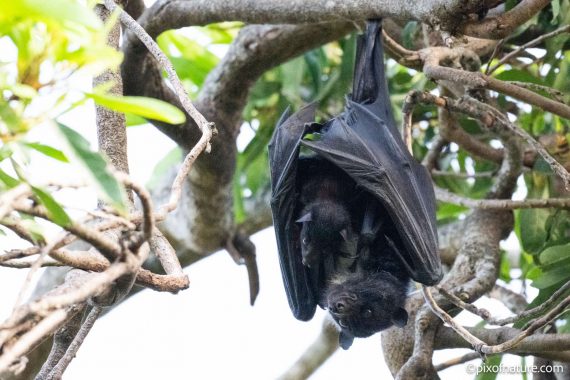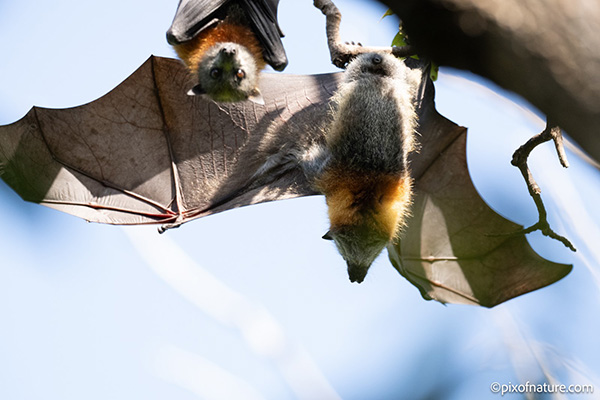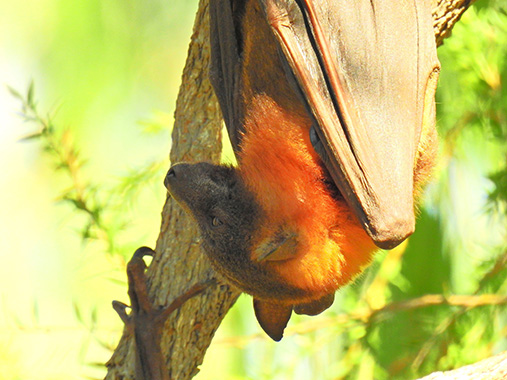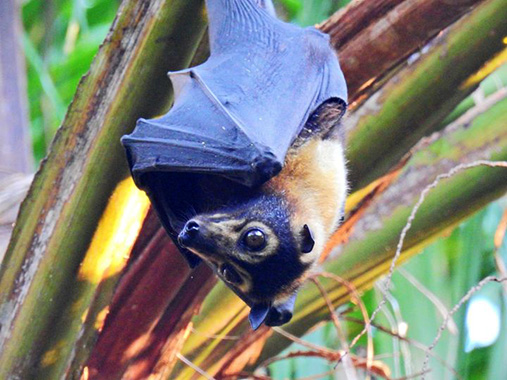FLYING FOXES
Australia’s Flying-Foxes
As the last rays of the sun fade into the horizon, a subtle stirring begins in the treetops. The air is warm and still, carrying the sweet, earthy scent of eucalyptus. From the dense foliage, dark silhouettes begin to unfurl — vast wings stretching against the dimming sky. The night belongs to the flying-foxes, Australia’s largest bats, whose graceful nocturnal flights sustain the lifeblood of forests across the continent.
The Majestic Megabats of Australia
Flying-foxes are placental mammals belonging to the group known as megabats. Unlike their insect-eating microbat cousins, they feed mainly on fruit, nectar, and pollen. Their large eyes and keen sense of smell guide them through the night without the need for echolocation.
Key Australian Flying-fox Species
| Common Name | Scientific Name | Notable Features |
|---|---|---|
| Black flying-fox | Pteropus alecto | Large, glossy black fur; widespread in northern and eastern Australia |
| Grey-headed flying-fox | Pteropus poliocephalus | Grey head with a reddish-brown collar; listed as Vulnerable in Australia |
| Little red flying-fox | Pteropus scapulatus | Smallest Australian flying-fox; highly nomadic, following flowering cycles |
| Spectacled flying-fox | Pteropus conspicillatus | Distinct pale “spectacles” of fur around the eyes; rainforest-associated; mainly in north-eastern Queensland; listed as Endangered in Australia |
Life in the Twilight
At dusk, flying-foxes leave their daytime roosts — often large communal camps in mangroves, forests, or urban trees — and set out on foraging flights that can span up to 50 kilometres.
- Diet: Native fruits, blossoms, and nectar
- Navigation: Exceptional eyesight and smell
- Social Structure: Constantly shifting, influenced by food availability and breeding cycles
The sight of thousands of bats streaming across the evening sky is both a natural wonder and a reminder of their role as ecological connectors, linking fragmented habitats through their nightly journeys.
Architects of the Forest
Flying-foxes are keystone species, meaning their presence is critical to the survival of many other organisms.
Pollination
As they feed, pollen clings to their fur and is carried between flowers, ensuring the reproduction of many plant species — some of which are inaccessible to other pollinators.
Seed Dispersal
By consuming fruit and excreting seeds far from the parent tree, they help regenerate forests, particularly in areas recovering from disturbance.
- A single flying-fox can disperse up to 60,000 seeds in one night.
- Seeds transported over long distances increase genetic diversity and resilience in plant populations.
The Cycle of Life
From October to December, mothers give birth to a single pup. These young are born with fur, open eyes, and a strong instinct to cling to their mother’s body.
- First 6 weeks: Pups remain in the colony while mothers forage at night.
- Around 11 weeks: Young bats begin to fly with the adults, learning to feed themselves.
This slow, attentive rearing results in strong social bonds and high parental investment — traits often associated with intelligent mammals.
Evolutionary and Cognitive Insights
Flying-foxes share surprising similarities with primates:
- Complex brains capable of problem-solving and memory retention
- Advanced vision with colour perception
- Olfactory sensitivity for detecting flowering trees from great distances
In their embryonic stage, they even possess a retractable tail bone, hinting at evolutionary pathways shared with other mammals.
Conservation and Coexistence
While flying-foxes are vital to ecosystems, they face increasing threats:
- Habitat loss from land clearing and urban development
- Climate impacts, including heat stress events during extreme temperatures
- Human conflict, especially in urban areas due to noise and smell from roosting colonies
- Barbed wire entanglements
Their decline would have cascading effects on Australian forests, as no other animal can fully replace their role in pollination and seed dispersal.
Protecting flying-foxes means protecting the forests that sustain countless other species — including us.
Imagine the rainforest without the nightly dance of the flying-foxes. Without their silent, purposeful flights, the tapestry of life would begin to unravel. These animals are not merely creatures of the night; they are gardeners of the sky, carrying the seeds of tomorrow’s forests on their wings.
In safeguarding their future, we preserve the living heritage of Australia’s wild landscapes — a heritage that hums with life in the darkness, carried by the beating wings of the flying-fox.
Fruit tree netting.
If you believe you must use netting to protect your fruit trees, make sure it is tightly pegged to the ground.
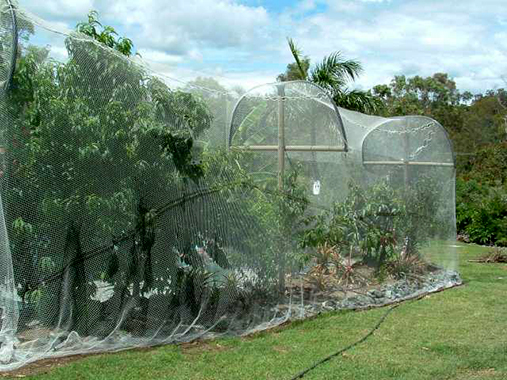
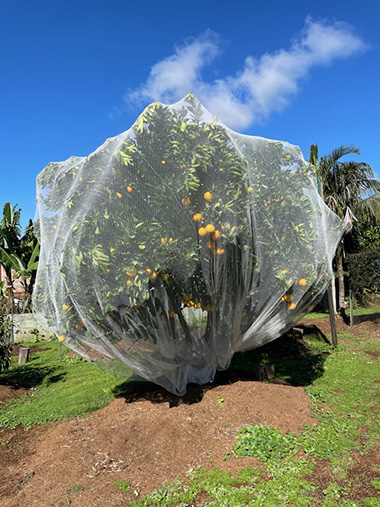
To avoid wildlife becoming trapped in your nets, ensure you only use netting with a mesh aperture no greater than 5 x 5 mm at full stretch.
An easy way to know if netting is safe for wildlife is to check that you cannot poke your finger through the mesh.
These tips will also help you keep wildlife out of your netting:
- Use white netting so wildlife can see and avoid it.
- Never throw netting loosely over trees as this can lead to entanglement, injury or death.
- Use netting that is stretched taut and held away from the tree, or nets with long skirts that gather around the tree’s trunk. An alternative is to drape shade cloth over fruit.
- Regularly check that netting is secure and that no wildlife has been trapped or hurt.
Better still, don’t use netting at all.

